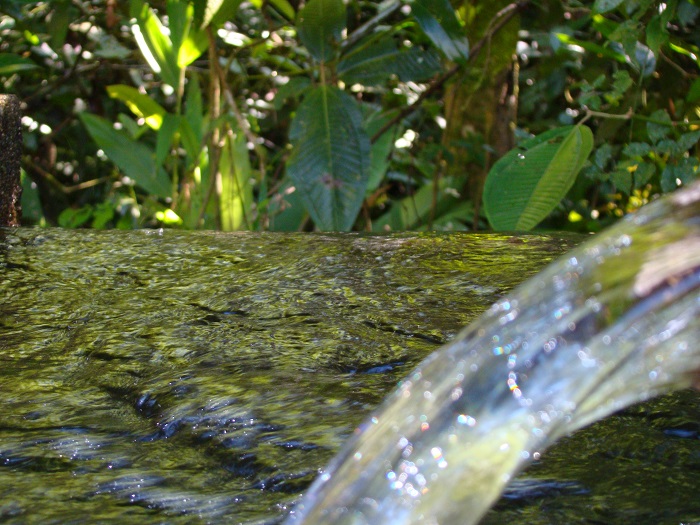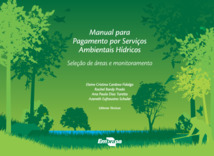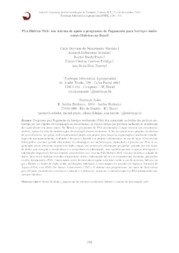PES are alternative to maintain land health
PES are alternative to maintain land health
In order to encourage people in the fields to adopt conservationist practices in their properties, Embrapa Soils researchers joined collaborators from other research centers in the corporation and external partners - the Brazilian National Water Agency (ANA), The Nature Conservancy (TNC) and the Boticário Foundation. The goal is to show the advantages of Payments for Environmental Water Services (PWES).
It is a compensation instrument that is becoming more and more common in Brazil and that contributes to the provision of environmental services in the fields, valuing the role of farmers in conservation, as it rewards those that conserve the soils, protect the woods and recover springs and riparian forests.
In order to guide farmers, Embrapa Soils researchers produced the “Manual for Payment for Environmental Water Services: selection of areas and monitoring”, which is being followed by communities in Rio de Janeiro and is an example in the Water and Forest Producers (PAF) program.
“The publication has three sets of methods that can guide an initiative in PWES: selection of indicators, monitoring and selection of priority areas”, explains the Embrapa Soils researcher Rachel Bardy Prado.
PAF started in 2007, with farmers from the microbasins of the Guandu River, responsible for the supply of 80% of the water consumed in the city of Rio de Janeiro and metropolitan region.
Farmers have started using many of the methods and knowledge obtained from the research and compiled in the manual, through partnerships with several institutions in Rio de Janeiro. The results were exciting. “At a first moment, the arrival of PAF brought jobs for the community, since we ourselves were in charge of fencing the areas and preparing the land”, reports Benedito Bernardo Leite Filho, a representative of a quilombo (Maroon settlement) in the district of Lídice (Rio Claro, RJ). “The program improved the quality of our water, the rivers are no longer shoaled. Moreover, increased tourism has brought income and jobs for the community”, Benedito concludes.
The researchers recall that the national water crisis has been aggravating as time goes by, and public and private agencies of the entire world seek solutions that can at least minimize the problem. It is not of today that the world population has been receiving alerts regarding the risks of a major water crisis.
In Brazil, metropolises such as São Paulo and Rio de Janeiro, with millions of inhabitants, regularly need enormous amounts of water. The inhabitants of Rio, for instance, consume 330 liters of water per day. The UN states that 110 liters would be enough. The increasing demand for water by the urban and rural population is huge and places pressure on fountainheads, which are often located in rural areas. Thus water management by farmers is fundamental for the maintenance and supply of the resource.
The manual
In order to inform the elaboration of the manual and consolidate partnerships, four events on the subject were held, gathering 66 institutions (government, universities, research institutes and NGOs). “We have elaborated a methodology for the selection of indicators for the monitoring of the PWES”, recalls the Embrapa Soils researcher Ana Paula Turetta. “The methodology was validated in a workshop, which counted on the participation of over 40 specialists related to the different environmental services related to water, besides stakeholders involved with the implementation and management of different types of PWES initiatives in Brazil”.
Moreover, PWES initiatives in the states of Minas Gerais, Rio de Janeiro, Santa Catarina and São Paulo were visited to identify research requirements to make this instrument more robust and bring science closer to decision-making, as well as learning the reality of the implementation of the PWES in rural areas.
A question that still raises doubts about the topic is who “pays” farmers. “Remuneration can come from a sector or an individual willing to pay for the environmental services provided. Generally speaking, in Brazil these sources of payment for PWES can be divided into four categories. In the first case, Watershed Committees have allocated funds that come from charges for water services. In the second category, states and cities create legislation that allows the use of public funds for the payments. The third case is when the private sector is convinced of the importance of water for production, as is the case of the beverage industries, and decides to pay to have quality water. And the last category involves the water supply companies, who pay and thus encourage environmental best practices to improve the quality of water to reduce treatment costs”, clarifies Fernando Veiga, from the The Nature Conservancy.
The “Manual for Payments for Environmental Water Services: selection of areas and monitoring” can be downloaded for free by clicking here (file in Portuguese).
Translation: Mariana Medeiros
Carlos Dias (20.395 MTb RJ)
Embrapa Soils
Press inquiries
carlos.diniz-dias@embrapa.br
Phone number: +55 21 2179-4578
Further information on the topic
Citizen Attention Service (SAC)
www.embrapa.br/contact-us/sac/



